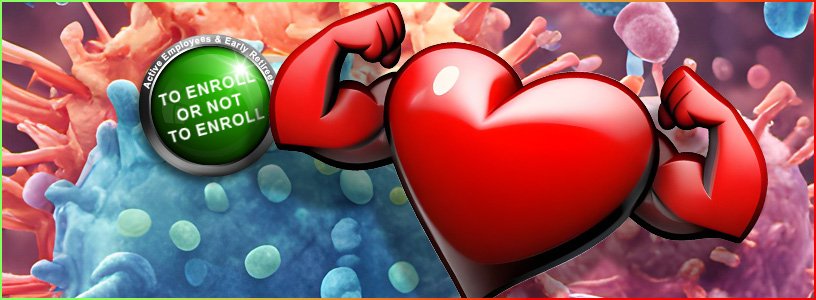YOU’VE GOTTA TAKE HEART: #WorldHeartDay is September 29
Did you know that nearly half of U.S. adults have heart disease…and many of them don't even know it?
Heart disease can lead to a heart attack, chest pain (angina), or stroke. It is the leading cause of death in the U.S., cutting short more than 700,000 lives every year.
If you have one of these key risk factors, don’t ignore it—take action NOW:
- High cholesterol: 2 in 5 of us have it, but there are no symptoms, so the only way to know if you have it is to get it checked with a simple blood test at your doctor’s office.
- High blood pressure: Nearly half of us have it, but less than 1 in 4 have it under control. There are no symptoms, so check it with a blood pressure cuff and talk to your doctor if it's at or above 130/80 mmHg.
- Smoking: More than 1 in 10 Americans smoke cigarettes, the single leading cause of preventable death in the U.S. If you smoke, support programs are proven to help you quit for good.
Developing heart-healthy habits NOW reduces your risk for heart disease LATER. Check out the American Heart Association’s Healthy for Good free program—and make lasting changes with a simple strategy: Eat smart. Move more. Be well.
Resources
TRIPLE-DEMIC 2023: Go on the Offensive this Fall
The U.S. is facing another "triple-demic" when three respiratory illnesses—COVID-19, flu, and respiratory syncytial virus (RSV)—will all peak during the fall and winter months. Vaccines, which help your immune system develop antibodies to fight off diseases before you are exposed to them, can reduce your risk for severe illness.
- FLU: Get an annual influenza vaccine (recommended for anyone 6 months and up). The best time to get the flu shot is in September and October, before flu season begins.
- COVID: Get a booster when it becomes available. Vaccine-makers are reformulating COVID-19 vaccines to target XBB, a subvariant of Omicron driving most current infections.
- RSV: If you are over age 60, ask your doctor about the new vaccine. For parents of infants up to 2 years old, talk to your pediatrician about the new antibody that can reduce your baby’s risk of getting RSV.
There is no cost to you when you receive vaccines from an in-network provider or pharmacy. Schedule your appointment right now!
Resources
- Providence: Help Protect Yourself and Your Loved Ones
- Kaiser Permanente: A Complete Guide to Flu and Flu Shots
- Express Scripts: Your summer COVID-19 update | Express Scripts® Pharmacy
- Centers for Disease Control: Prevent Flu
TO ENROLL OR NOT TO ENROLL: That is the Question
If you're an eligible Active Employee or Early Retiree, annual Open Enrollment for benefits takes place October 9-27. This is your once-per-year opportunity to enroll (if you're not yet enrolled) or change your benefit selections (if you're already enrolled).
Watch for an Open Enrollment packet to arrive in your mail by October 9. Be sure to read it to understand your options and any updates for the 2024 Plan Year (January 1 – December 31, 2024).
Do You NEED to Enroll?
- If you are NOT currently enrolled, you must enroll by October 27 to have benefits in the 2024 Plan Year. If you don't enroll, you won't have coverage during the 2024 Plan Year (January 1–December 31, 2024).
- If you ARE currently enrolled and you don't want to change your benefit selections (or add or drop dependents), you don't need to do anything unless you want a Flexible Spending Account during the 2024 Plan Year. Your current benefit selections (except FSAs) will automatically roll over unless you change them during Open Enrollment.
- Want to save money with an FSA? You must enroll to have a Flexible Spending Account in 2024. FSAs do NOT roll over. (Available to eligible Active Employees only.)
- To enroll beginning October 9, follow these instructions:
- Active Employees: Go to selfservice.pps.net and log in using your PPS username and password. (To access Employee Self-Service for the first time, you must complete a 2-step authentication process while connected to the PPS Wi-Fi network (ppswifi) which requires you to be in or near a PPS building.)
- Early Retirees: Complete the enrollment form and turn it in to the Administrative Office.
Resources
- SD-1 Trust Library: Open Enrollment—What’s the Big Deal?
- SD-1 Trust Library: How to Get Answers for Your Trust Benefits Questions


